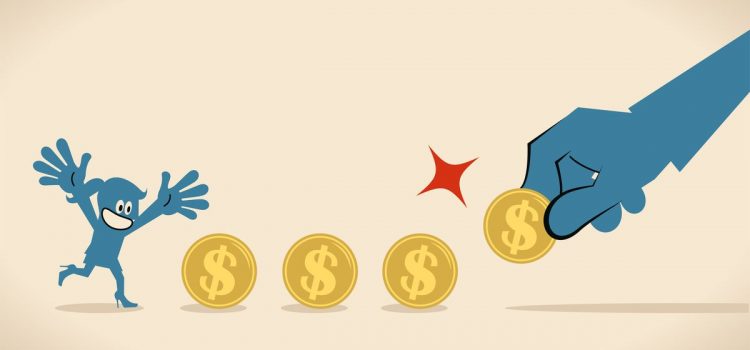


For some kids, school breaks mean family vacations, part-time jobs, sports and hobbies, or soaking in the general bliss of not having to do homework. For others, it means learning about NFTs.
This summer in Los Angeles, dozens of children ages 5 to 17 will attend the third-ever session of Crypto Kids Camp, where they’ll learn about everything from artificial intelligence to virtual reality using hands-on games and activities. (The camp was scheduled to take place this week during the April public school break, but due to a construction issue in their space, it’s been rescheduled for summer.) It’s part of a burgeoning cottage industry made up of camps, startups, and video content devoted to educating the next generation about Web3, sometimes even before they can read.
According to founder Najah Roberts, the camp is a way to lessen the wealth gap between privileged kids and underserved communities. “It’s important to catch our kids when they’re young to help them open their minds to what the possibilities are,” she says. “You can tell them that there are jobs in tech, but when they actually know that they can create those jobs, those platforms, those games, you see their minds open.”
The weeklong camp, which costs $500, divides kids into four age groups and has them spend a set amount of time on different tech modules that follow the acronym Beastmode (that’s blockchain, evolution of money, artificial intelligence, security/cyber, technology/virtual reality, mining and machine learning, online gaming, drones, and engineering). Some parents pay for it, but kids from poorer backgrounds may be eligible to receive a scholarship. Attending kids receive a laptop, a drone, a robot, a VR headset, and a phone with a crypto wallet, all of which they get to keep. “It’s like Christmas,” says Roberts of the day when the campers receive their wallets. “They’re stoked.” She has big plans: By this summer, Crypto Kids Camp plans to operate in six states, and by fall, there are expected to be 41 locations nationwide.
It isn’t the only kids’ camp devoted to the subject; similar programs exist at the University of Pennsylvania and other colleges across the country; in Miami; and, naturally, online. Children’s media has also capitalized on Web3: Zigazoo, a TikTok-like platform for ages 3 to 12, is releasing NFT collaborations with recognizable YouTube sensations Cocomelon, Blippi, and Serena Williams’ Qai Qai universe. “We’re trying to teach kids about digital and financial literacy and empower them to create their own art and go build the future of the web,” says Zigazoo founder Zak Ringelstein. Also part of this brave new world: crypto-only virtual piggy banks for kids, books and YouTube explainers with titles like “C Is for Cryptocurrency”, and an NFT-based kids’ TV show starring tiny plush cactuses.
Crypto-for-kids initiatives often tout themselves as being on the forefront of education and preparing future workers for lucrative jobs in tech. Part of the draw of these programs for parents, to be sure, is to compensate for the largely absent personal finance education offered at most public schools in the US. But undergirding this still relatively new industry is the question of whether cryptocurrency and blockchain actually is the future people should be preparing their children for. There are plenty of valid reasons to believe that Web3 in general rests on shaky technology and promises that sound great on paper but don’t work in practice, not to mention that the risk of getting rug-pulled by an NFT project or scammed by a meme coin creator is much higher than investments in traditional financial products. Perhaps, some have argued, that what kids need is better education about more stable methods of investing.
“I find it actually a little frightening to hear that there’s this industry out there socializing very young children about very risky products,” says Joyce Serido, a professor of family social science at the University of Minnesota who studies financial behaviors within families. She’s an advocate for teaching children about money as early as possible, but worries that cryptocurrency is still too volatile and untested to be understood by kids. “You can explain that for every one person that [hits the jackpot] there are 1,000 who lose it all, but that doesn’t resonate with a 15- or an 18-year-old,” she says. “They’re thinking ‘I’m going to be the one who makes it.’” Her advice: “Give them $5 to invest in crypto or have them play a stock market simulation game to limit the losses. And when they lose, it’ll be a very good lesson.”
Serido’s first recommendation for teaching kids about money, however, aligns with Crypto Kids Camp’s: Start with something tangible, like physical currency that can help show that money is a finite resource. But, she says, “the second lesson, which is probably the most important, is that what you’re really trying to help your children learn is self-regulation” — basically, they need impulse control. Another crucial aspect is to ensure they learn from reliable sources; it’s harder to vet information coming from YouTube, anonymous message boards, or their peers.
Teachers say they are noticing their students spending more time on platforms like Robinhood, where people can buy and trade crypto. Though technically it’s only available to adults 18 or over, some teenagers use an account a parent has set up for them, and many crypto wallets have no age limits at all. Nate, a teacher in Virginia who asked not to include his last name for concerns over future employment, says that over the last two years, he’s watched his high school students develop major interest in crypto, stock trading, and sports gambling. During study hall, he’d glance at their screens — all of them boys — and see the temperamental fluctuations of the Robinhood line graph or the FanDuel home page. He’s heard one story from a fellow teacher about a ninth grader at another school who made a bet on a college football game and won $500,000, then had to pretend that his father had actually made the bet.
:no_upscale()/cdn.vox-cdn.com/uploads/chorus_asset/file/23382845/Screen_Shot_2022_04_06_at_1.36.08_PM.png)
Nate says he can usually tell when a kid might be getting into some potentially risky financial habits: “Once they start fanboying Elon Musk, you’ve probably got a kid who’s interested in these things,” he says. He’s also noticing that middle school students are responding to the fervor around NFTs without understanding what they are; during one project in a class on technology that involved AI-generated art, “there were a number of sixth grade boys that were elated to see that you could turn the art into an NFT and sell it,” he says. “They knew it was cool and trendy and their ears perked up.”
It makes sense, considering the media frenzies over kids like British 12-year-old Benyamin Ahmed who made more than $400,000 in two months selling NFTs of pixelated whales, or the pair of 14- and 9-year-old siblings who make $30,000 per month mining bitcoin. This is the world that Gen Z and Gen Alpha have been raised in: a world where entrepreneurs are lauded as heroes, where a magazine called Teen Bo$$ exists, and where making money is a hobby. “I am fascinated by how advanced these young children are about these emerging technologies,” says Serido. But, she adds, “our mission is to help them navigate the world they will inherit, a world we don’t understand and we’re not going to be here to see.”
It’s too soon to tell if Web3 is the answer. But Najah Roberts and other educators are betting it will be, and they want kids to be prepared. “We started off educating adults,” she says, “and then we started realizing our kids really need this. STEM and STEAM are missing it big time. Everybody wants to talk about coding, which is great, but then what? We want to make sure that our children are getting the same education as the adults are getting, but even at a more rapid pace. Because they are the future.”
This column was first published in The Goods newsletter. Sign up here so you don’t miss the next one, plus get newsletter exclusives.
